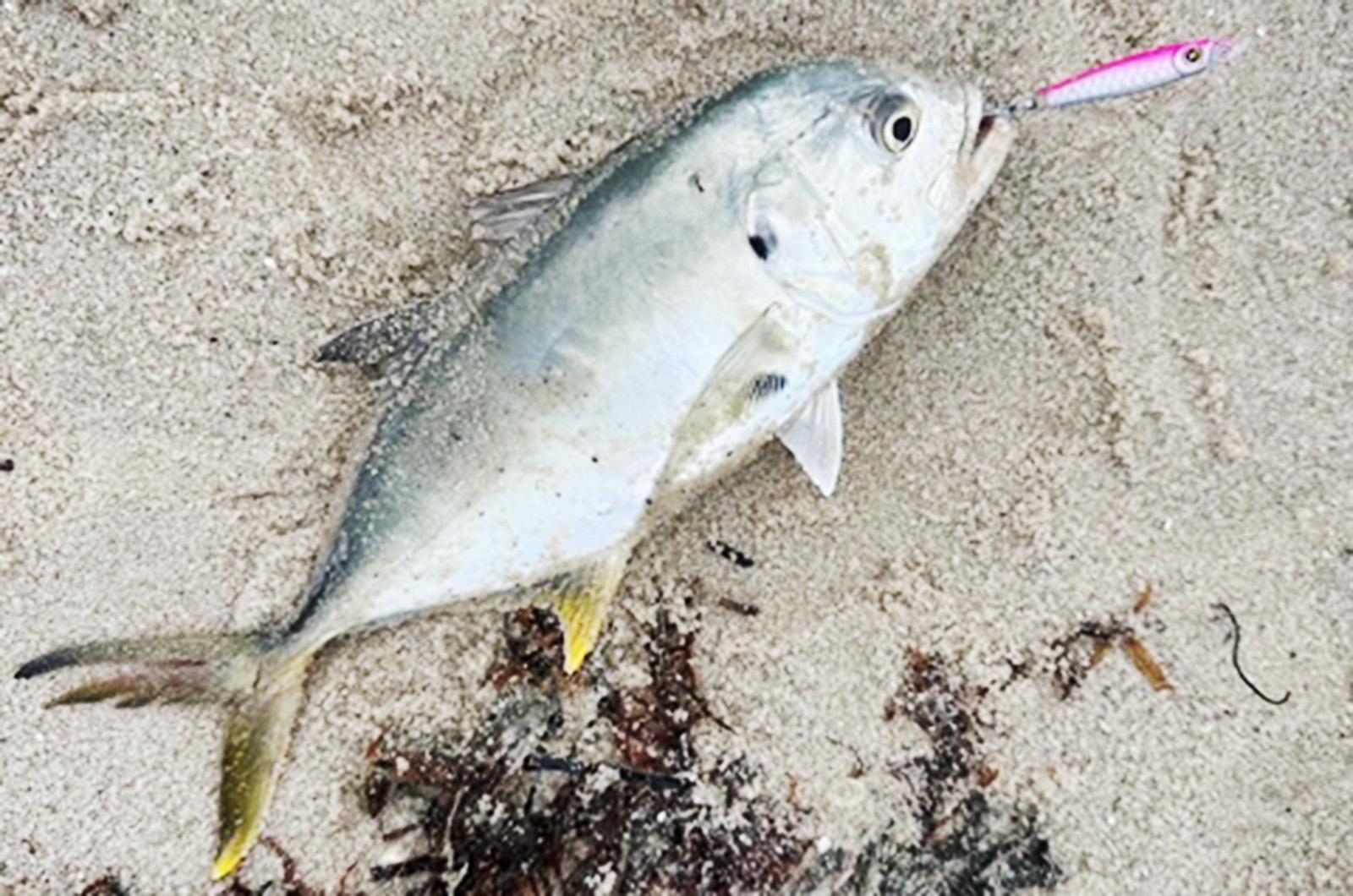You don’t know jack.
But some of our local anglers do. Derby participant Tyson Tyler-Dottin knows jack. Crevalle jack or jack crevalle — you decide — is a regular, if not so common, fish to find in our waters. Tyson and a few other fishing friends caught a few last week at an undisclosed location.
Crevalle jacks are an interesting and challenging fish to catch. They snort or croak when pulled from the water and are known to be fighters. Definitely watch out for their powerful jaw and sharp teeth when handling them.
Adult fish can even exhaust themselves to death in the struggle. Ranging from two to five pounds on average, up to 25 pounds with records up to 50 pounds, these fish are strong and built for speed. They regularly challenge fishers further south, where they are a plentiful and a popular sport fish. The ones in our waters tend to be smaller juveniles.
Jack crevalle are also known as common jack, black-tailed trevally, couvalli jack, black cavalli, jack crevale, or yellow cavalli. Many of these names echo its scientific nomenclature, caranx hippos, which means Caribbean horse fish, since they prefer tropical and subtropical climes.
En masse, jack schools operate more like a pack of wolves than the bucking broncos they individually resemble when hooked. They herd prey — including small fish, crustaceans, mollusks and plankton — and will also chase their quarry to hard structures or onto the beach.
These very efficient predators have an ability to detect dimethylsulfoniopropionate (DMSP), a chemical created by algae and released by foraging zooplankton that allows them to locate and eat masses of plankton. In turn, they are prey for sharks, marlin, barracuda and sea birds. And Tyson Tyler-Dottin, even if they weren’t his intended derby catch.
Tyson’s fish didn’t end up as a jack in the (cooler) box. This species is not known for its culinary qualities and most fishers practice catch and release, as Tyson did. Others insist that proper preparation, including bleeding, improve the taste of the fish’s red, oily, strong flesh.
Even with that advice, reported cases of ciguatera poisoning and unpalatable parasites found on this fish make it no surprise that we don’t see it on the dinner table or restaurant menus.
With a range as far north as Nova Scotia, jacks are regular visitors to our region, mostly as migrators and usually as juvenile fish. The fittest of the species will move to warmer waters, and those that don’t can die of hypothermia with our water’s cooler seasonal temperatures. Jack crevalle will perish at temperatures lower than 48 degrees Fahrenheit.
Large die-offs of these fish are possible if the schools don’t make it to warmer waters on time. A report of the death of more than 200 of these fish was documented in one Massachusetts mass mortality incident that occurred in Slocum’s River. Finding them in estuarine or less saline waters in not unusual, as his species is euryhaline, meaning they can survive in a variety of salinities.
With the crevalle jack’s escape from Tyson and the coming cold water, the best thing that this fish could do is to follow Ray Charles’ melodic advice: “Hit the road Jack, and don’t ya come back no more no more no more no more.”
Suzan Bellincampi is Islands director for Felix Neck Wildlife Sanctuary in Edgartown and the Nantucket Wildlife Sanctuaries. She is also the author of Martha’s Vineyard: A Field Guide to Island Nature and The Nature of Martha’s Vineyard.




Comments
Comment policy »